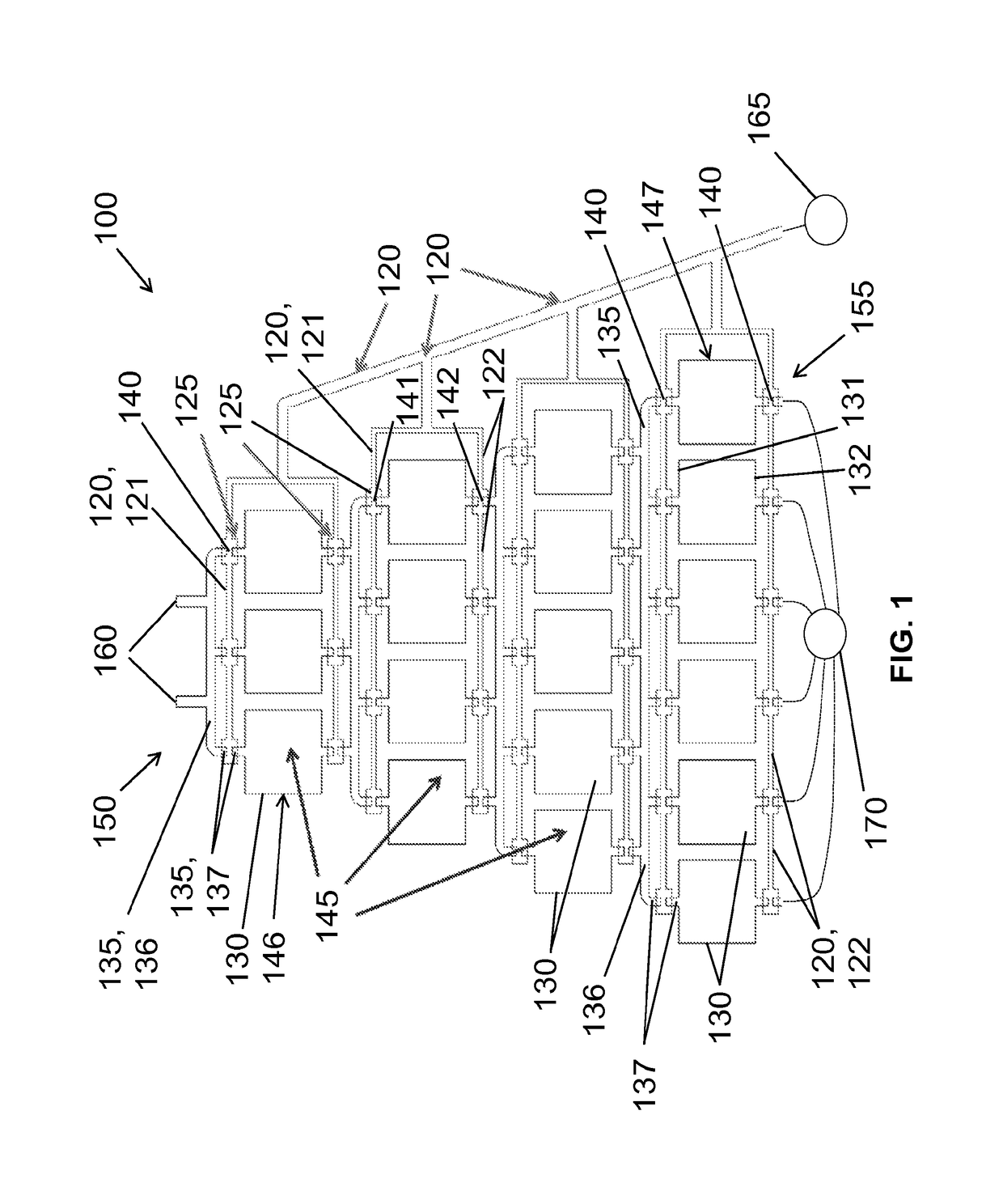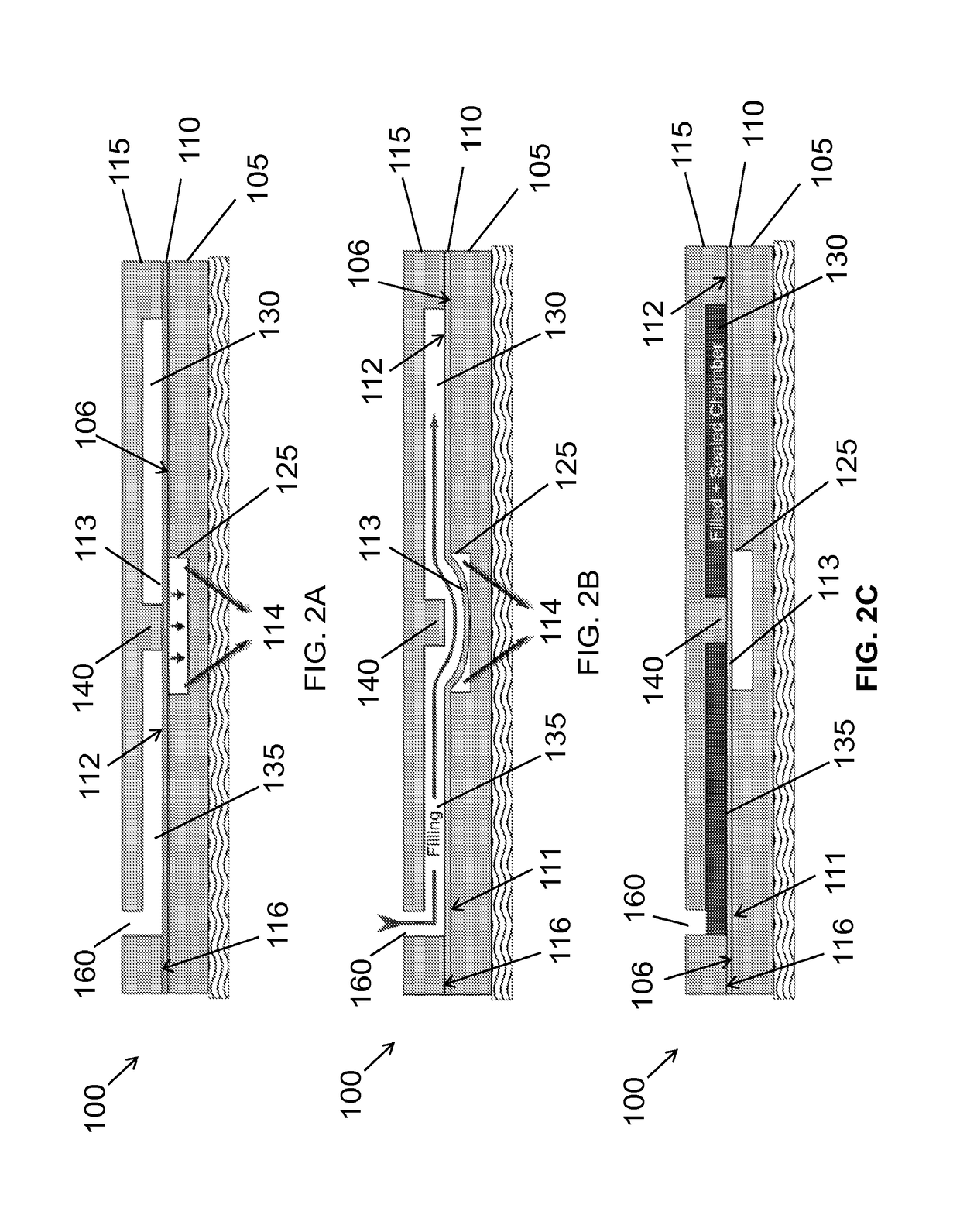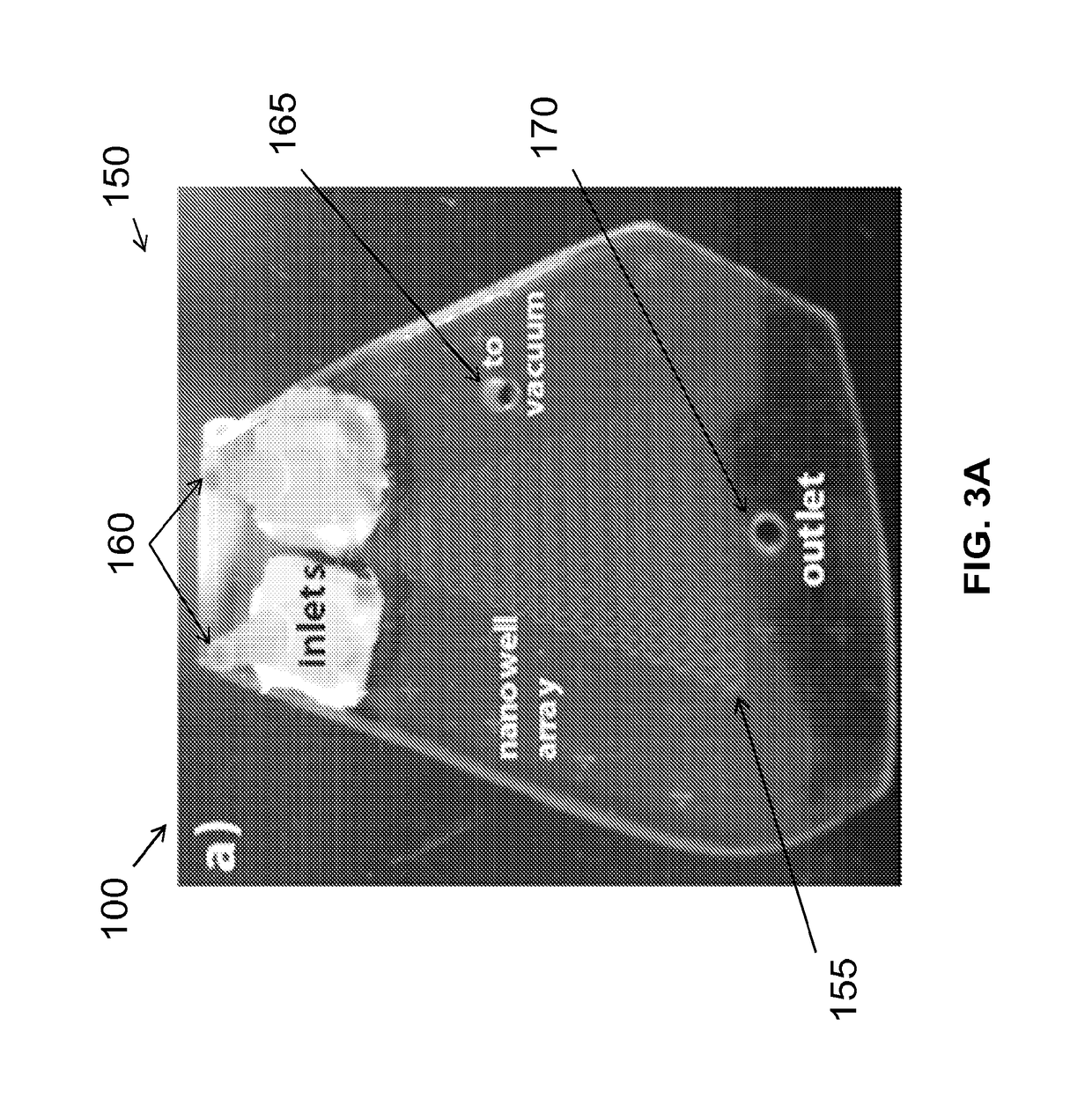Methods, systems and apparatus for microfluidic crystallization based on gradient mixing
a microfluidic crystallization and gradient mixing technology, applied in the field of methods, systems and apparatus for microfluidic crystallization based on gradient mixing, can solve problems such as difficult retrieval of protein samples, and achieve the effects of convenient establishment of hundreds of unique concentrations, high throughput, and convenient study
- Summary
- Abstract
- Description
- Claims
- Application Information
AI Technical Summary
Benefits of technology
Problems solved by technology
Method used
Image
Examples
Embodiment Construction
[0027]As used herein, with respect to measurements and numerical ranges, “about” means + / −5%.
[0028]As used herein, the term “analyte solution” may include any suitable particle or analyte including, but not limited to, proteins, such as membrane proteins such as photosystem I (PSI) and pigment protein complexes like photoactive yellow protein (PYP) and phycocyanin, as well as enzymes like lysozymes, and other substances such as nucleic acids, microparticles, nanoparticles, biological cells, viruses, biomolecules, nanocrystals, cancer cells, mitochondria or other cell organelles.
[0029]As used herein, the term “precipitant” may include solutions containing salts such as sodium chloride (NaCl), magnesium sulfate (MgSO4) and ammonium sulfate ((NH4)2SO4) or other constituents such as buffering agents, detergents, organic solvents or polymers, for example.
[0030]Example microfluidic apparatus, systems and methods for microfluidic crystallization based on gradient mixing are described herei...
PUM
| Property | Measurement | Unit |
|---|---|---|
| concentration | aaaaa | aaaaa |
| concentration | aaaaa | aaaaa |
| concentration | aaaaa | aaaaa |
Abstract
Description
Claims
Application Information
 Login to View More
Login to View More - R&D
- Intellectual Property
- Life Sciences
- Materials
- Tech Scout
- Unparalleled Data Quality
- Higher Quality Content
- 60% Fewer Hallucinations
Browse by: Latest US Patents, China's latest patents, Technical Efficacy Thesaurus, Application Domain, Technology Topic, Popular Technical Reports.
© 2025 PatSnap. All rights reserved.Legal|Privacy policy|Modern Slavery Act Transparency Statement|Sitemap|About US| Contact US: help@patsnap.com



